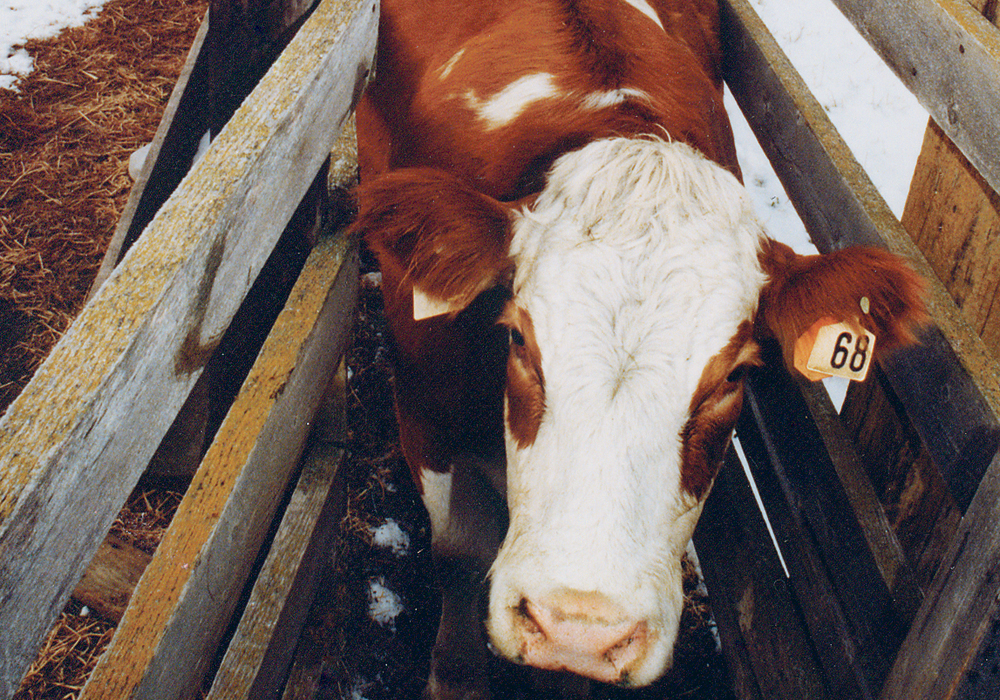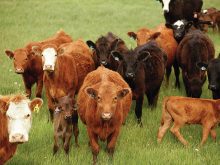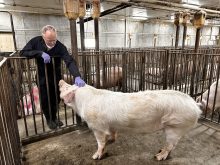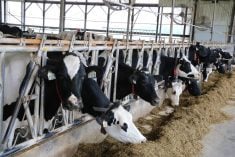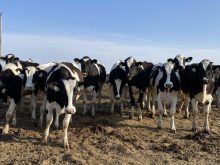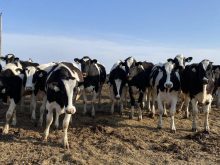Time and labour are often in short supply at cow-calf operations, but there are ways producers can save both, while also saving a bit of money.
Drones should be used on most larger operations for checking cattle, checking fences, checking watering troughs, finding lost cattle and identifying sick ones. Drones are quick and the images are clear. We have heard lots about them in crop production but now cattle producers should explore their numerous uses.
Handling facilities are being designed with low-stress cattle handling in mind. Neck restraint bars make it much easier to implant, treat with oral products or give injections, whether it be antibiotics or vaccines. If your chute doesn’t have neck restraint bars and you do a lot of processing, get it upgraded.
Read Also

Beef check-off collection system aligns across the country
A single and aligned check-off collection system based on where producers live makes the system equal said Chad Ross, Saskatchewan Cattle Association chair.
Many alley systems are too narrow for today’s larger feedlot steers or the heavily pregnant thick modern cows. Wider systems allow the cattle to flow through easier.
Often cattle will flow through the system right up to the chute. Hydraulic chutes can eliminate at least one person’s labour because of the time saved. As well, because hydraulic chutes are easier to use, you are not exhausted after handling several hundred head. They are a worthwhile investment, especially if a roof is built over the chute so it can be operated in inclement weather.
It is imperative that these sheds have a way to hold in supplemental heat, given the cold winters that are so common in Western Canada.
Sliders and bifold doors have replaced many of the alley stops in alley systems. Often if left open, cattle will follow the leader and stream in from the tub systems. I find in these systems that at least one handler can be eliminated.
For producers who are doing all the work at the chute, bottle-mount guns can save time. As well, trying to minimize shots and using vaccines with low dosages can help save labour.
Calving books can be replaced by apps available for smartphones. The Herd Trax program allows users to enter treatments, diagnosis, weights and more. The data goes to a computer and can go to the herd veterinarian as well.
All the information is based off of the Canadian Cattle Identification Agency tag number. This gives producers useful information, can help in marketing cattle and saves much time compared to keeping paper records. Withdrawals of antibiotics are tracked so it ties in nicely with a veterinary-client-patient relationship.
Many feedlots have radio-frequency identification (RFID) readers on their chutes, and more cow-calf units will adopt the technology before long.
These units allow all information collected during processing to be automatically entered into a data base. The technology comes with a cost, but the labour savings are huge.
Other ways to save time and labour include looking at antimicrobials with longer-lasting properties, feeding medications, and adding deworming ingredients to water. All can save time and be just as effective as other methods of administration. Many may need a veterinary prescription. As an example, imagine if range cattle could be given a dewormer for lungworms in the middle of the summer, either through the water or in the minerals or feed.
While novel treatment methods require planning and sometimes a veterinary prescription if used off-label, the time, stress and labour is eliminated because cattle don’t have to be gathered for processing. This works especially well for species such as bison and elk and it helps address potential animal welfare issues as well.
Checking cattle is time-consuming, so drones and monitors on water troughs have saved time and ward off disasters when water systems fail.
Some producers have installed automatic openers on their gates or installed gates that they can drive over and the gates pop back up after the vehicle has passed. Both are huge labour savers.
Extra time gained through efficient operations give producers added time to observe their cattle. Early detection of diseases can speed recovery.
Dart guns can also save time and labour and minimize animal stress, although they have several downfalls.
Maybe some of these ideas will provide more time for producers to properly manage their labour resources and implement other management ideas to improve production, animal welfare and marketing opportunities.



